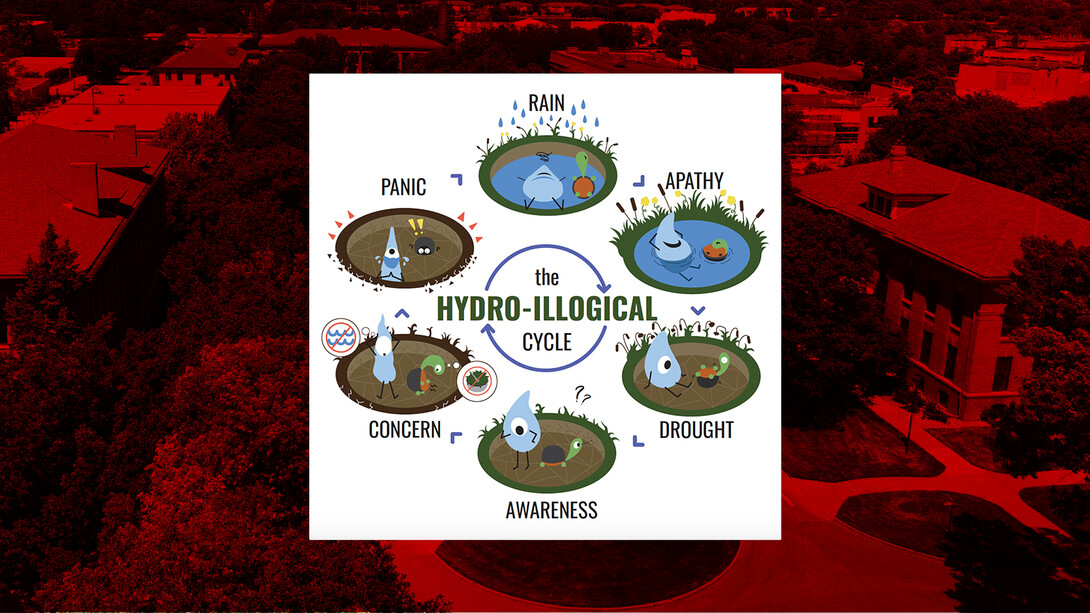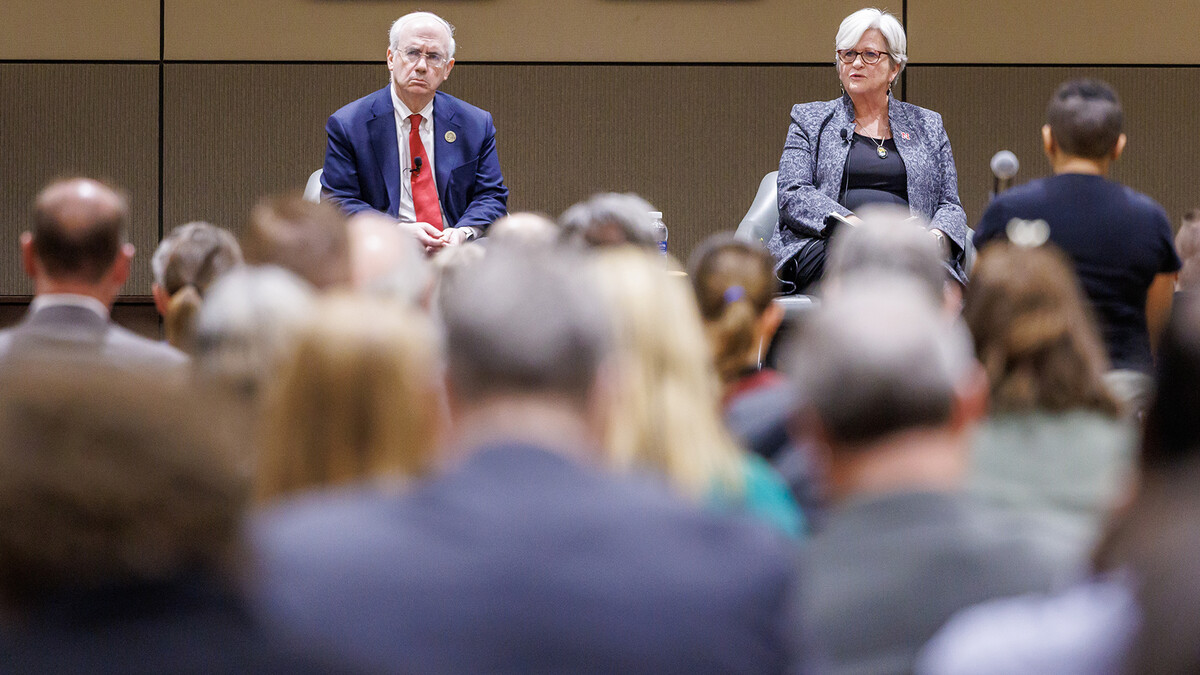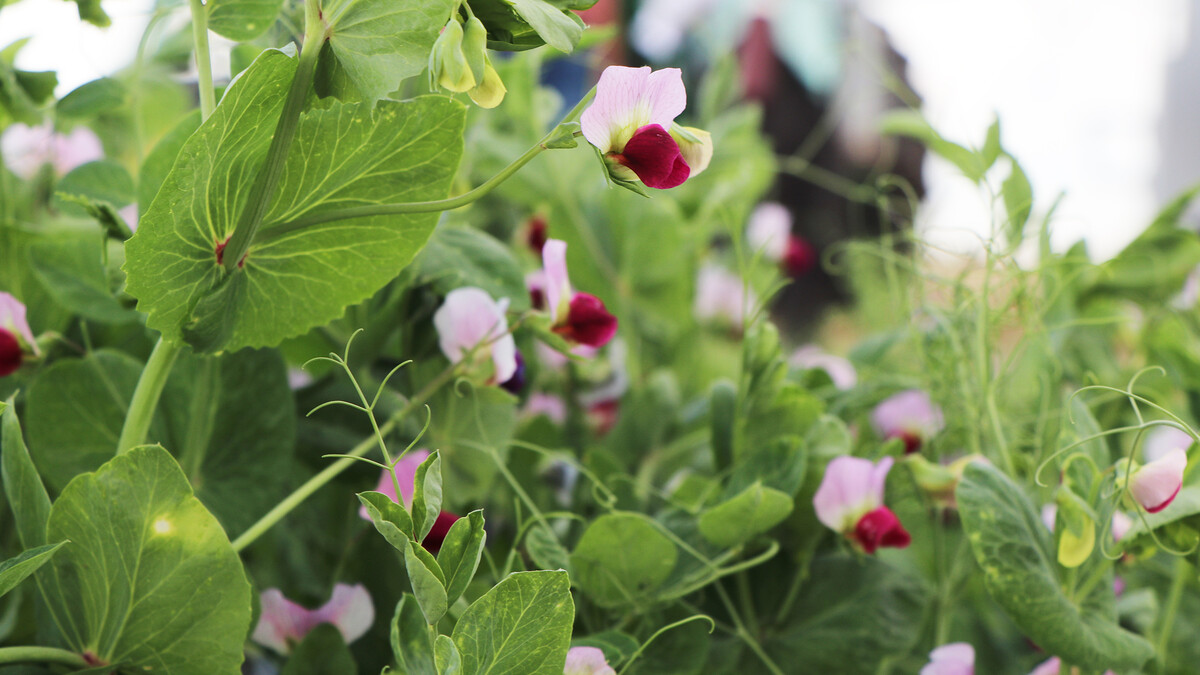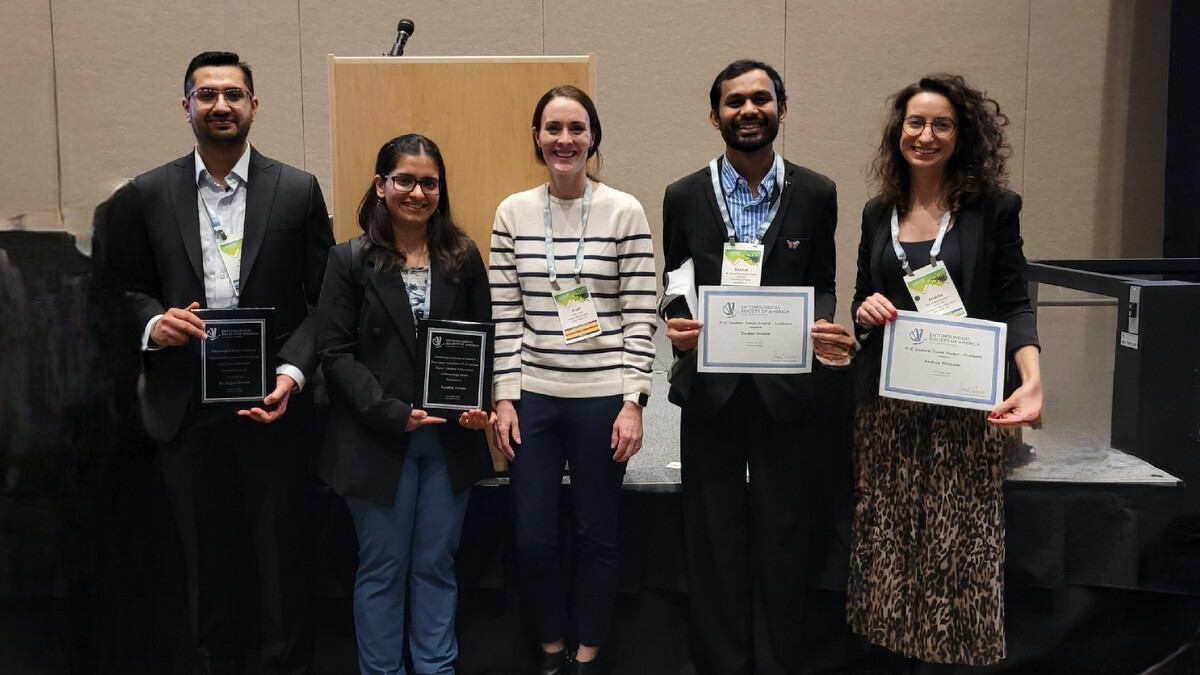
Lincoln, Neb. —Advanced graphic design students found themselves playing Ready for Drought in early 2019, the first step in a collaborative learning experience with the National Drought Mitigation Center.
The game introduced them to thinking about drought as part of an interdisciplinary partnership between the NDMC, housed at UNL’s School of Natural Resources, and the Graphic Design 421 class led by School of Art, Art History and Design assistant professor Stacy Asher. The NDMC acted as a client for students, and, eventually, interns who created static and animated designs that conveyed drought’s myriad impacts.
Last fall, Asher was part of a faculty group that submitted a grant to develop a transdisciplinary Environmental Futures Program, which would pair students of arts and sciences on projects that showcased both. Asher said she proposed the collaboration between GRPH 421 students and the NDMC team because it was an ideal case study to show how STEM and the arts could converge in a classroom setting.
"Why did I reach out?” Asher said. “I think it's because I have a sincere interest in the topic, but alsoThe National Drought Mitigation Center is here and it's part of our university community and they're doing important global work. What a neat opportunity for students to collaborate and be part of a meaningful project.
“Having an organization on campus that has a worldwide scope makes a big difference compared to me saying to my students: 'Water is important. Let's design something.' There were clear objectives and specific messaging that needed to be communicated that the NDMC has researched and decided are key parts of the story. Now, how do we tell it visually?”
The NDMC team presented the design students with two projects. One was a re-imagining of the original Hydro-Illogical Cycle illustration, which shows that people tend to lapse back into apathy after a drought ends. The NDMC’s mission, to mitigate drought, means that rather than lapsing into apathy, communities, states and countries should prepare for the inevitable emergence of the next drought. Though the stages remained the same, students were tasked with developing relatable characters who could convey that this cycle was one that needed to be broken. The other project was titled Faces of Drought, and was based on an idea developed by NDMC director Mark Svoboda. The concept, Svoboda said, was to personify the effects that drought has across the U.S. and the world.
“Drought affects everyone, and everyone can benefit from better preparing for drought,” said Deborah Bathke, NDMC Education Coordinator. “Our interns, and the entire graphic design class, did a great job in their project work of illustrating how drought’s impact is a global concern, and how falling into the cycle of struggling through a drought and relaxing once it rains doesn’t improve responses for future droughts.”
On the February day that NDMC staff hosted the Ready for Drought game, students were told that their work would be displayed during the center’s 25th anniversary event in the summer of 2020. Within weeks, though, UNL went to a remote learning format to help control the spreading coronavirus pandemic. The collaboration continued through it, with NDMC staff joining student design presentations and critiques. There, drought’s effects were presented in collages, graphs, animations and comic panels.
“It’s a credit to Stacy, the students and NDMC staff for how seamless the switch was,” says Brendon Orr, NDMC web graphics designer. “Even though we were limited to a virtual format, it was still very rewarding to see the creativity and talent in many of the students come through in their designs and to offer feedback to help the students improve their work and grow as potential design professionals.”
Said Asher: “It was reassuring to go into remote learning knowing that the NDMC team was also there and that it wasn't just me and the students up against the project. It was all of us working together.”
Though the coronavirus reshaped how the collaboration unfolded, Asher said that redesigning the Hydro-illogical Cycle aligned with the stated class objectives.
“One of the objectives is to work with symbols and signs and icons and be able to convey conceptual ideas with visual form,” she said. “What does apathy look like? What does concern look like? How do you attach a visual language to aspects of human behavior? It's a great design challenge.”
And it was a challenge that three GRPH 421 students continued exploring during summer internships with the NDMC. Hannah Birdwell, Lindsey Musil and Muskan Yadav were hired to continue developing their Hydro-illogical Cycle and Faces of Drought work for the NDMC. Their work could be used in future NDMC presentations and on the NDMC website.
“All three interns did a solid job of interpreting NDMC’s provided specifications into visually interesting artwork that could potentially be used in a variety of media,” Orr said. “They also displayed the ability to make iterative progress on their designs and be open to cultivating the valuable skill of taking constructive feedback and incorporating it.”
When she first began working on the Hydro-illogical Cycle project during the class presentation, Birdwell said she tried to think of an elemental character that would be directly affected by drought. What she came up with was a personified water droplet, one that could shrink as the cycle’s stages progressed toward drought. The design continued to evolve during the internship — the droplet gained a friend to help deal with drought, a turtle — and Birdwell said she’s most proud of that work because of how much it developed.
“It started as a very abstract idea with mostly colors and a single eye as the ‘character’ and developed into an animation with the droplet and eventually turned into the final design with the droplet and the turtle telling this story of how they dealt with an instance of drought,” Birdwell said. “The most important part is that they encourage readers to learn how to break the cycle by visiting the NDMC website. It started as ‘this is the cycle of drought’ and ended as ‘go get informed on how to stop the cycle.’ The call to action makes a huge difference.”
Musil said that when she pictures drought, she envisions a warm and dry environment, with cracked earth and brown or tan colors. In her designs, she said, she wanted to reimagine the color palette of drought while still incorporating visual elements — like a wiltingsunflower, for instance — that portray the urgency to respond to droughts.
“I think design helps convey these same messages by breaking the mold of what drought can look like,” Musil said. “I think by creating a new lens on these issues through color, subject matter, and composition, design can help bring more attention to the environmental issues communicated by the NDMC.”
Yadav said that design serves as a bridge between science and the general public by conveying key messages in engaging ways, which can help broaden understanding of how it impacts people and the environment. Yadav came into the project with a personal understanding of drought that fueled her design.
“I was born and brought up in India, and when I think of drought, I think of a failed monsoon,” said Yadav. “The monsoon is India's life giver, its rebirth, its bloodline. Nowadays, India is facing its worst water crisis and when I think of that I imagine a woman carrying a ghada — water container — on her head and walking miles to get water for her and her family. This is how much the monsoon is important to me and I know how exhausting it feels to wait for the monsoon season to arrive. So, I tried to incorporate that in my designs by not just portraying the impact of droughts but also conveying the importance of water.”
Said Asher: “The fact that three students left the class project and moved into a real position — getting paid, working with professionals — is an opportunity. The fact that the class experience evolved into an employable position is ideal for our students.”
The NDMC 25th anniversary event has been indefinitely postponed in an effort to contain the spread of the coronavirus. With that gathering on hold, the NDMC wanted to provide a sneak preview of some of the professional-level work that the students created in this edition of DroughtScape. These illustrations that accompany this story were all designed during the class collaboration and student internships.







